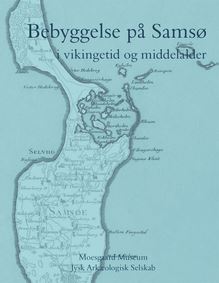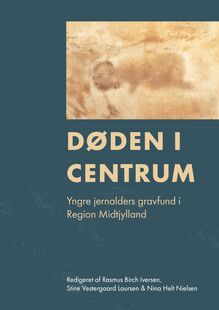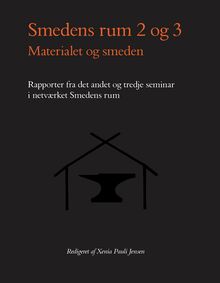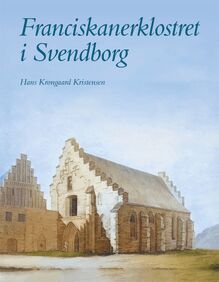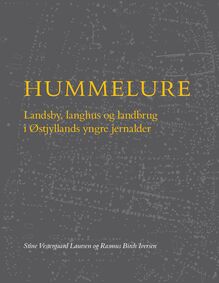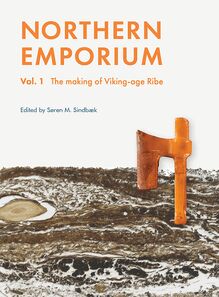-
 Univers
Univers
-
 Ebooks
Ebooks
-
 Livres audio
Livres audio
-
 Presse
Presse
-
 Podcasts
Podcasts
-
 BD
BD
-
 Documents
Documents
-
- Cours
- Révisions
- Ressources pédagogiques
- Sciences de l’éducation
- Manuels scolaires
- Langues
- Travaux de classe
- Annales de BEP
- Etudes supérieures
- Maternelle et primaire
- Fiches de lecture
- Orientation scolaire
- Méthodologie
- Corrigés de devoir
- Annales d’examens et concours
- Annales du bac
- Annales du brevet
- Rapports de stage
La lecture à portée de main
Découvre YouScribe en t'inscrivant gratuitement
Je m'inscrisDécouvre YouScribe en t'inscrivant gratuitement
Je m'inscrisEn savoir plus
En savoir plus

Description
This first volume presents the results of these excavations and analyses to piece together the history of the emporium and its social fabric. The research employs novel, high-definition methods to explore the networks of the site, integrating an extensive use of geoarchaeology and 3D stratigraphic recording with intensive environmental sampling and artefact recovery, resulting in more than 100,000 artefact finds. The results transform our understanding of key points of the early history of the North Sea region. Through the remains of dwellings and workshops – the traces left by traders, sailors, weavers, tailors, comb makers, and skilled producers of glass beads and metal ornaments – we follow the creation of Viking Age social networks, along with some of the most iconic artistic products of this world and the daily lives of some of its notable inhabitants.
Sujets
Informations
| Publié par | Aarhus University Press |
| Date de parution | 01 juillet 2022 |
| Nombre de lectures | 0 |
| EAN13 | 9788793423763 |
| Langue | English |
| Poids de l'ouvrage | 64 Mo |
Informations légales : prix de location à la page 0,0350€. Cette information est donnée uniquement à titre indicatif conformément à la législation en vigueur.
Extrait
NORTHERN EMPORIUM
Vol. 1 The making of Viking-age Ribe
In the early Middle Ages, a network of maritime trading towns – emporia NORTHERN
– emerged along the northern coasts of Europe. These early urban sites
are among archaeology’s most notable contributions to our knowledge
of the period between the disintegration of the Western Roman Empire
and the growth of a maritime-oriented world in the Viking Age. Ribe, EMPORIUMon the western coast of Denmark, is one of these sites. In 2017-18
the Northern Emporium research project conducted seminal research
excavations, which provided new foundations for the study of this nodal
point between Western Europe, Scandinavia and the world beyond. Vol. 1 The making of Viking-age Ribe
This first volume presents the results of these excavations and analyses
to piece together the history of the emporium and its social fabric.
The research employs novel, high-definition methods to explore the
Edited by Søren M. Sindbæknetworks of the site, integrating an extensive use of geoarchaeology and
3D stratigraphic recording with intensive environmental sampling and
artefact recovery, resulting in more than 100,000 artefact finds. The
results transform our understanding of key points of the early history of
the North Sea region. Through the remains of dwellings and workshops
– the traces left by traders, sailors, weavers, tailors, comb makers, and
skilled producers of glass beads and metal ornaments – we follow the
creation of Viking Age social networks, along with some of the most
iconic artistic products of this world and the daily lives of some of its
notable inhabitants.
Jutland Archaeological SocietyNorthern EmporiumNorthern Emporium
Vol. 1 The Making of Viking-age Ribe
Edited by Søren M. Sindbæk
Jutland Archaeological SocietyNorthern Emporium
Vol. 1 The Making of Viking-age Ribe
RIBE STUDIER 3
© Authors, editor and Jutland Archaeological Society 2022
Layout and cover: Ea Rasmussen
Language revision: Taylor Grace FitzGerald & Rosie Bonté
Photos except where otherwise credited: Museum of Southwest Jutland
Tin section micrographs: Barbora Wouters
Plans and 3D models except where otherwise credited: Sarah Croix
Illustrations and graphics: Lars Foged Tomsen
Jutland Archaeological Society Publications vol. 122
ISBN 978-87-93423-76-3
ISSN 0107-2854
Printed by Narayana Press
Paper: 130g Arctic Volume White
Published by
Jutland Archaeological Society
Moesgård Allé 20
DK-8270 Højbjerg
Distributed by
Aarhus Universitetsforlag A/S
Finlandsgade 29
DK-8200 Aarhus N
Published with fnancial support of:
Queen Margrethe II's Archaeological Foundation
Te Carlsberg Foundation
Te Danish National Research Foundation’s Centre for
Urban Network Evolu tions (UrbNet), grant DNRF119.
Contents
Preface . . . . . . . . . . . . . . . . . . . . . . . . . . . . . . . . . . . . . . . . . . . . . . . . . . . . . . . . . . . . . . . . . . . . . . . . 7
INTRODUCTION
1. Emporia, high-defnition archaeology, and Ribe . . . . . . . . . . . . . . . . . . . . . . . . . . . . . . . . . . . . 11
Søren M. Sindbæk
2. Te excavation at SJM 3 Posthustorvet. . . . . . . . . . . . . . . . . . . . . . . . . . . . . . . . . . . . . . . . . . . . 25
Claus Feveile & Søren M. Sindbæk
ATLAS
3. Excavation atlas . . . . . . . . . . . . . . . . . . . . . . . . . . . . . . . . . . . . . . . . . . . . . . . . . . . . . . . . . . . . 49
Sarah Croix, Pieterjan Deckers, Claus Feveile, Maria Knudsen, Sarah Skytte Qvistgaard,
Søren M. Sindbæk & Barbora Wouters
ANALYSES
4. 3D spatial recording and stratigraphic analysis . . . . . . . . . . . . . . . . . . . . . . . . . . . . . . . . . . . . 219
Sarah Croix
5. Soil and sediment micromorphology . . . . . . . . . . . . . . . . . . . . . . . . . . . . . . . . . . . . . . . . . . . 239
Barbora Wouters
6. Site formation and artefact assemblages . . . . . . . . . . . . . . . . . . . . . . . . . . . . . . . . . . . . . . . . . . 271
Pieterjan Deckers
7. Soil geochemistry . . . . . . . . . . . . . . . . . . . . . . . . . . . . . . . . . . . . . . . . . . . . . . . . . . . . . . . . . . 301
Pernille L.K. Trant
8. Te Emporium’s in situ preservation conditions . . . . . . . . . . . . . . . . . . . . . . . . . . . . . . . . . . . . 315
Søren M. Kristiansen & Anna K.E. Tjellden
9. Dendrochronology. Oak from Ribe – A glimpse into structures from the eighth century . . . . . 327
Aoife Daly
10. Radiocarbon chronology and Bayesian age model . . . . . . . . . . . . . . . . . . . . . . . . . . . . . . . . . . 341
Bente Philippsen & Jesper Olsen
11. Zooarchaeology. . . . . . . . . . . . . . . . . . . . . . . . . . . . . . . . . . . . . . . . . . . . . . . . . . . . . . . . . . . . 363
Jacob Kveiborg
12. Insect remains from excavations at Posthustorvet in Ribe . . . . . . . . . . . . . . . . . . . . . . . . . . . . 389
Enid Allison & Harry Kenward
13. Te analysis of eighth- and ninth-century plant material from Posthustorvet . . . . . . . . . . . . . . 417
Peter Mose Jensen
OUTLOOK
14. Te making of a northern emporium. . . . . . . . . . . . . . . . . . . . . . . . . . . . . . . . . . . . . . . . . . . . 435
Søren M. Sindbæk
List of authors. . . . . . . . . . . . . . . . . . . . . . . . . . . . . . . . . . . . . . . . . . . . . . . . . . . . . . . . . . . . . . . . . 464Back to Table of Contents
Preface
Ribe, the oldest town in Denmark, is an important transport. Te study of Ribe is key to understanding this
archaeological source for European history between the ‘network urbanism’ as an archaeological and historical
Migration Period and the Middle Ages. As one of a small phenomenon.
group of emporia that emerged around the North Sea Te aim of the Northern Emporium project has been
and the Baltic Sea in the seventh century AD, Ribe was a to explore the evolution and dynamics of this earliest
hub for maritime networks, through which the exchange urban network in Scandinavia and the transition to the
of goods and cultural interactions connected the world maritime-based network society of the Viking Age. Tis
from northern Norway to the Mediterranean and the study issues from new, signifcantly improved data based
Middle East in new ways. Ribe gathered and catalysed a on a comprehensive, stratigraphic excavation of
settleworld in fux at the threshold of the maritime expansion ment and workshop layers in a central part of the earliest
of the Viking Age. settlements of Ribe.
While the remains from other North Sea emporia have Te general aim of the project was to shed light on
been largely destroyed, the archaeology of early Ribe is urbanism as a network dynamic and on the signifcance
in places exceptionally well preserved as thick anthro- that events, conficts, and fows had on economic and
pogenic deposits containing a large number of arte- cultural processes. Tis has been done through high-
facts, traces of crafs, and other remains. In present-day defnition archaeology, which has clarifed both the
Denmark, Ribe is indisputably the most abundant archae- development of the site and its connections, as well as
ological source for the hundred years preceding to the the underlying dynamics. Te more specifc aims have
Viking Age. Te site’s intact and detailed stratigraphy also revolved around the interrelationships between processes
makes it a signifcant reference point for both archaeolog - and actors in urbanization, the scope and organization of
ical chronology and knowledge about material culture in commercial exchange, and the dynamics and impact of
Northern Europe in the period c. AD 700-900. global fows. A combination of detailed data on context
From its birth at the beginning of the eighth century, and chronology, together with a programme of scientifc
Ribe held a special place in Scandinavia as a settlement analysis of fnd materials, has aimed to determine how –
of high density located at a convenient river port. Here, and to what extent – urban networks catalysed societal
many workshops produced wares that required a sophis- and environmental expansion and crises in the Nordic
ticated diversity of techniques and materials: Mediterra- world at the threshold of the Viking Age.
nean glass, brass from mines in Germany, Arctic reindeer Te excavations, conducted from June 2017 to August
antler, and so forth. For the frst time in Scandin avia, 2018, covered substantial parts of two plots and an
adjatrade was conducted using native coins. Te frst city cent street front in order to elucidate questions regarding
in what is now present-day Denmark, Viking-age Ribe the nature and development of the settlement. Te project
received enough attention to be mentioned in a written applied a combination of consistent stratigraphic
excasource, and it was a place where new cultural traits were vation and integration of high-defnition methods from
adopted – among them the establishment of the frst the natural sciences (e.g. geochemical element analysis,
Christian church in the country. Tis was a place that was dirt DNA, proteomics, micromorphology), in order to
associated with a new form of social network: an urban yield new knowledge about cultural-historical problems.
network focusing on complex, specialized settlements Furthermore, the documentation of the excavations imple -
connected across large distances by land and maritime mented dynamic digital meth
-
 Univers
Univers
-
 Ebooks
Ebooks
-
 Livres audio
Livres audio
-
 Presse
Presse
-
 Podcasts
Podcasts
-
 BD
BD
-
 Documents
Documents
-
Jeunesse
-
Littérature
-
Ressources professionnelles
-
Santé et bien-être
-
Savoirs
-
Education
-
Loisirs et hobbies
-
Art, musique et cinéma
-
Actualité et débat de société
-
Jeunesse
-
Littérature
-
Ressources professionnelles
-
Santé et bien-être
-
Savoirs
-
Education
-
Loisirs et hobbies
-
Art, musique et cinéma
-
Actualité et débat de société
-
Actualités
-
Lifestyle
-
Presse jeunesse
-
Presse professionnelle
-
Pratique
-
Presse sportive
-
Presse internationale
-
Culture & Médias
-
Action et Aventures
-
Science-fiction et Fantasy
-
Société
-
Jeunesse
-
Littérature
-
Ressources professionnelles
-
Santé et bien-être
-
Savoirs
-
Education
-
Loisirs et hobbies
-
Art, musique et cinéma
-
Actualité et débat de société
- Cours
- Révisions
- Ressources pédagogiques
- Sciences de l’éducation
- Manuels scolaires
- Langues
- Travaux de classe
- Annales de BEP
- Etudes supérieures
- Maternelle et primaire
- Fiches de lecture
- Orientation scolaire
- Méthodologie
- Corrigés de devoir
- Annales d’examens et concours
- Annales du bac
- Annales du brevet
- Rapports de stage
